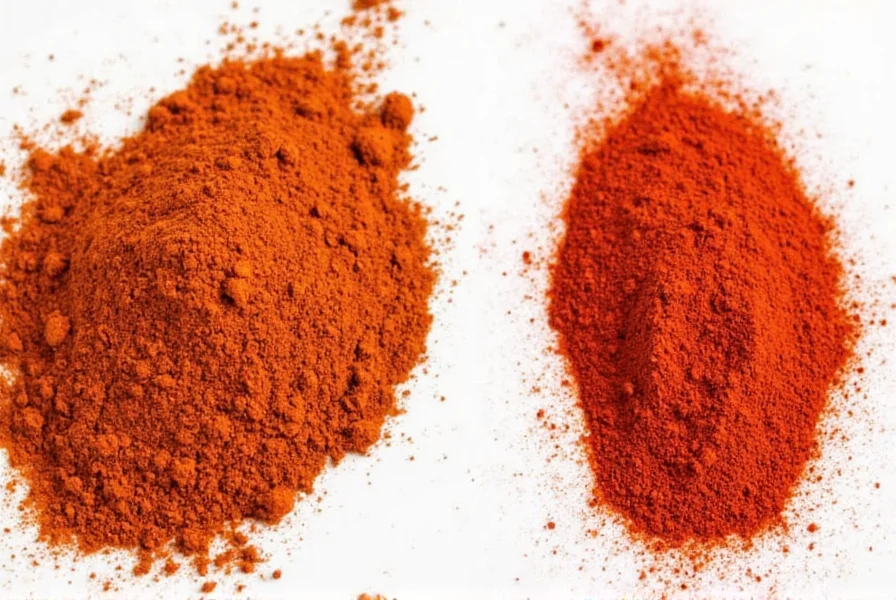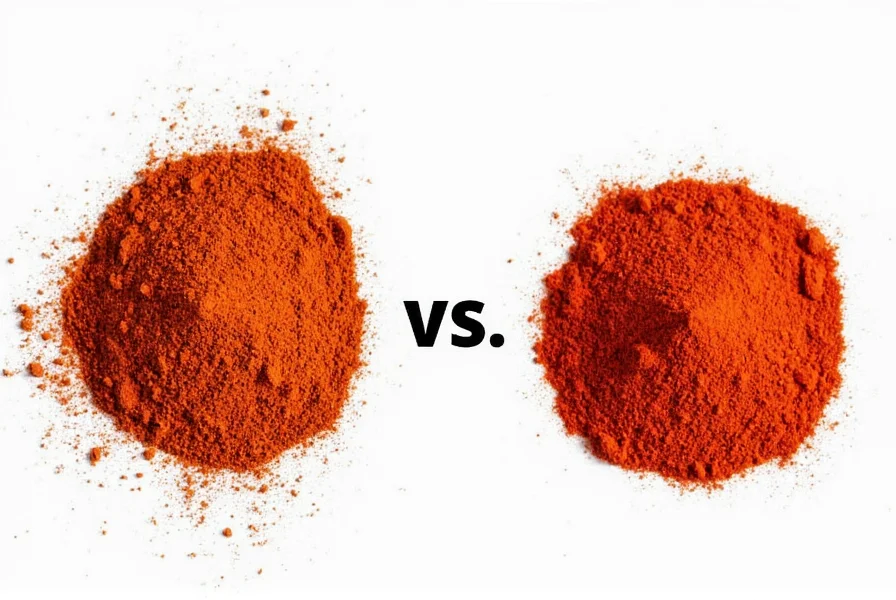Understanding the distinction between chili powder and cayenne powder is essential for home cooks and culinary professionals alike. While both appear similar in their red powder form, they serve distinctly different purposes in the kitchen. This comprehensive guide explores their composition, heat levels, flavor profiles, and optimal culinary applications to help you make informed seasoning choices.
What Exactly Is Chili Powder?
Chili powder isn't a single ingredient but rather a carefully balanced spice blend that varies by region and manufacturer. The base typically consists of dried, ground mild red chilies like ancho or New Mexico peppers, combined with complementary spices that enhance its complex flavor profile.
The standard composition of commercial chili powder includes:
| Component | Percentage | Contribution |
|---|---|---|
| Ground dried chilies | 60-70% | Base flavor and mild heat |
| Cumin | 15-20% | Earthy, warm notes |
| Garlic powder | 5-10% | Savory depth |
| Oregano | 3-5% | Herbal complexity |
| Cilantro | 2-4% | Subtle citrus notes |
This blend creates a versatile seasoning with moderate heat ranging from 0-2,500 Scoville Heat Units (SHU), making it suitable for everyday cooking without overwhelming spice sensitivity. The addition of complementary spices gives chili powder its characteristic warm, earthy flavor that forms the foundation of many Tex-Mex and Southwestern dishes.

Understanding Pure Cayenne Powder
Unlike chili powder, cayenne pepper powder is a single-ingredient spice made exclusively from dried and ground cayenne peppers. These slender, bright red peppers belong to the Capsicum annuum species and deliver a clean, intense heat without additional flavor complexity.
Cayenne powder's heat level ranges dramatically from 30,000 to 50,000 Scoville Heat Units, making it approximately 15-20 times hotter than standard chili powder. This significant heat difference explains why substituting one for the other without adjustment can ruin a dish.
The flavor profile of cayenne is straightforward: intense heat with subtle fruity undertones and minimal earthiness. Without additional spices, cayenne delivers a direct, sharp heat that builds quickly and dissipates faster than the more complex heat of chili powder blends.
Key Differences at a Glance
When comparing chili powder vs cayenne powder, several critical distinctions emerge that affect their culinary applications:
| Characteristic | Chili Powder | Cayenne Powder |
|---|---|---|
| Composition | Spice blend (multiple ingredients) | Pure ground cayenne peppers |
| Heat Level (SHU) | 0-2,500 | 30,000-50,000 |
| Flavor Complexity | Earthy, warm, complex | Sharp, clean, primarily heat-focused |
| Color | Bright red to brick red | Vibrant, intense red |
| Primary Culinary Use | Base seasoning for chili, tacos, stews | Heat boost, finishing spice, hot sauces |
Substitution Guidelines: When and How to Swap
Understanding the difference between chili powder and cayenne powder is crucial when substituting. Due to their vastly different heat levels, direct 1:1 substitution will likely result in an inedible dish. Consider these guidelines when making substitutions:
- Replacing chili powder with cayenne: Use only 1/8 to 1/4 teaspoon cayenne for every tablespoon of chili powder required. Supplement with additional cumin (1/2 tsp) and garlic powder (1/4 tsp) to approximate the flavor profile.
- Replacing cayenne with chili powder: Use 2-3 tablespoons of chili powder for every 1/4 teaspoon of cayenne. Be aware this will significantly alter the dish's flavor profile by adding earthy notes.
- For authentic heat without flavor alteration: Consider using cayenne in dishes where you want pure heat without additional flavor elements, such as in certain hot sauces or when finishing a dish.
Professional chefs often keep both spices on hand because they serve different purposes. Chili powder works as a foundational seasoning, while cayenne functions as a precision heat tool.

Culinary Applications: Best Uses for Each Spice
Understanding when to use chili powder instead of cayenne can transform your cooking. Each spice shines in specific applications:
Optimal Chili Powder Applications
- Classic chili con carne: Forms the flavor base along with other spices
- Taco seasoning: Provides the characteristic Tex-Mex flavor profile
- Meat rubs: Blends well with other spices for barbecue applications
- Bean dishes: Complements legumes without overwhelming heat
- Stews and soups: Adds depth without dominating other flavors
Optimal Cayenne Applications
- Hot sauces: Provides consistent, intense heat
- Finishing spice: A light sprinkle adds heat without cooking off
- Egg dishes: A pinch enhances scrambled eggs or deviled eggs
- Marinades: Penetrates proteins for even heat distribution
- Certain baked goods: Adds subtle warmth to chocolate recipes
Storage Recommendations for Maximum Freshness
Both spices lose potency over time, but proper storage extends their shelf life:
- Store in airtight containers away from light and heat
- Keep away from the stove or other heat sources
- Chili powder maintains quality for 18-24 months
- Cayenne powder retains potency for 24-36 months
- Test potency by rubbing a small amount between fingers and smelling
When spices lose potency, they won't provide the expected heat or flavor, which can lead to overuse and unbalanced dishes. Properly stored, both should maintain vibrant color and strong aroma.
Common Misconceptions Clarified
Several myths persist about these spices that deserve clarification:
- Myth: "Chili powder is just mild cayenne" - Reality: They're fundamentally different products with distinct compositions
- Myth: "All chili powders are the same" - Reality: Formulations vary significantly by brand and region
- Myth: "Cayenne is just for making food hot" - Reality: It has subtle flavor notes beyond just heat
- Myth: "The red color indicates heat level" - Reality: Color doesn't reliably indicate heat in spice blends
Understanding these distinctions helps cooks make informed decisions rather than relying on common misconceptions about chili powder composition ingredients and cayenne pepper powder uses.
Conclusion: Making the Right Choice for Your Dish
The difference between chili powder and cayenne powder ultimately comes down to purpose: chili powder provides complex flavor with moderate heat, while cayenne delivers intense, focused heat. Recognizing these distinctions allows you to use each spice appropriately, enhancing your dishes rather than overwhelming them.
When following recipes, pay close attention to which spice is specified. When creating your own dishes, consider whether you need foundational flavor (chili powder) or targeted heat (cayenne). By understanding these differences in flavor between chili powder and cayenne, you'll gain greater control over your culinary creations and develop more balanced, professional-quality dishes.
Frequently Asked Questions
Can I substitute cayenne for chili powder in chili recipe?
Yes, but with extreme caution. Use only 1/8 to 1/4 teaspoon of cayenne for every tablespoon of chili powder called for, and supplement with 1/2 teaspoon cumin and 1/4 teaspoon garlic powder to approximate the flavor profile. The dish will be significantly hotter, so adjust according to your heat tolerance.
Why is my chili powder not spicy?
Most commercial chili powders contain only 60-70% ground chilies, with the remainder being milder spices like cumin and garlic powder. The specific chilies used (often ancho or New Mexico peppers) are naturally mild (0-2,500 Scoville units). For more heat, look for "hot" labeled chili powder or add a pinch of cayenne.
How much cayenne equals one tablespoon of chili powder?
Approximately 1/8 to 1/4 teaspoon of cayenne powder equals one tablespoon of chili powder in terms of heat level. However, this substitution won't replicate the complex flavor of chili powder, so you should also add complementary spices like cumin and garlic powder.
Does cayenne powder lose heat over time?
Yes, cayenne powder gradually loses potency but doesn't completely lose its heat. Properly stored in an airtight container away from light and heat, it maintains significant heat for 24-36 months. The flavor compounds degrade faster than the capsaicin, so older cayenne may have less complex flavor while still providing heat.
Is cayenne pepper the same as red pepper flakes?
No, they're different products. Cayenne powder is a fine, pure ground powder made exclusively from cayenne peppers. Red pepper flakes are coarsely ground dried chilies that typically contain multiple chili varieties, seeds, and membranes, resulting in inconsistent heat levels and texture.











 浙公网安备
33010002000092号
浙公网安备
33010002000092号 浙B2-20120091-4
浙B2-20120091-4